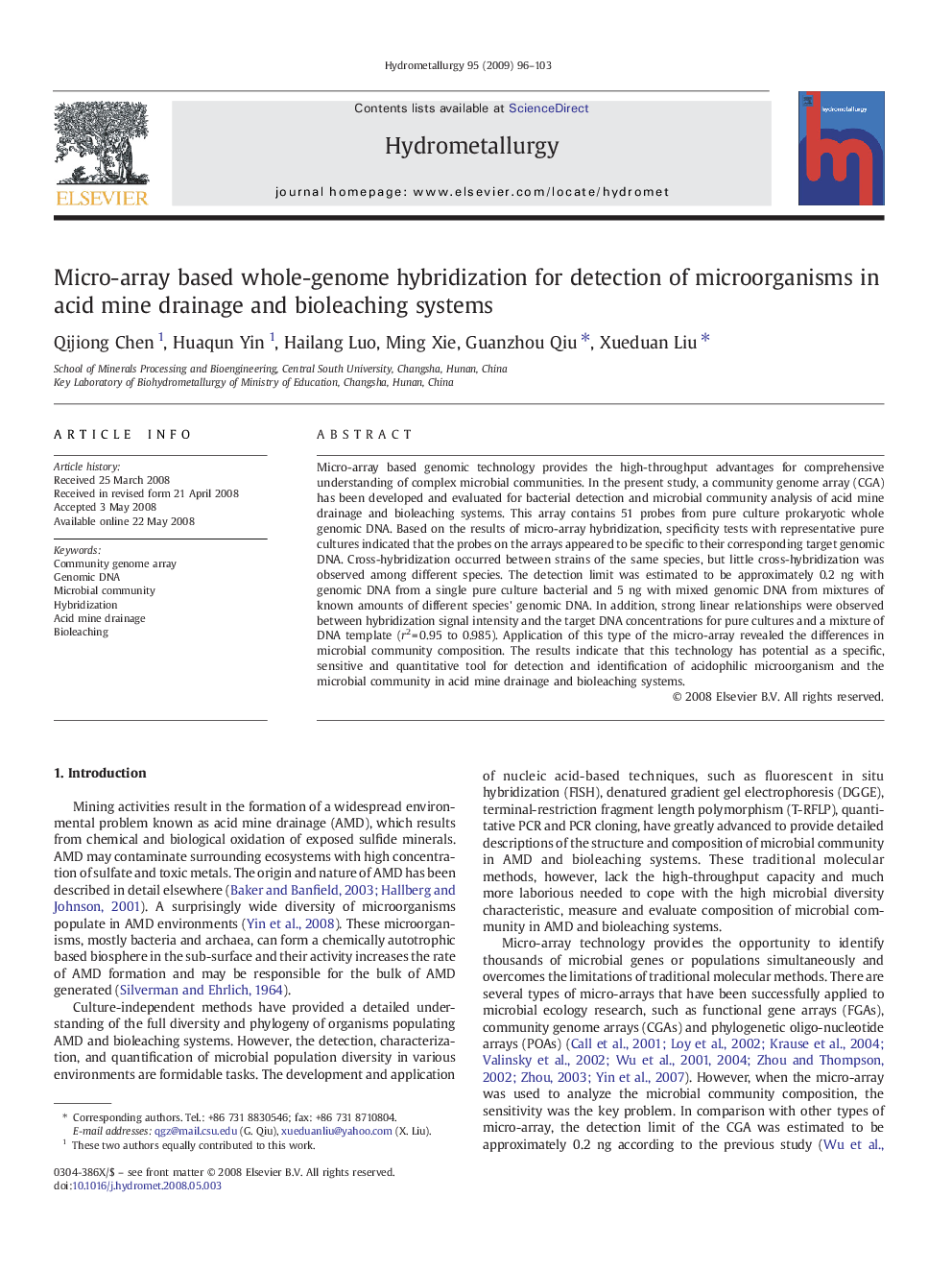| Article ID | Journal | Published Year | Pages | File Type |
|---|---|---|---|---|
| 213047 | Hydrometallurgy | 2009 | 8 Pages |
Micro-array based genomic technology provides the high-throughput advantages for comprehensive understanding of complex microbial communities. In the present study, a community genome array (CGA) has been developed and evaluated for bacterial detection and microbial community analysis of acid mine drainage and bioleaching systems. This array contains 51 probes from pure culture prokaryotic whole genomic DNA. Based on the results of micro-array hybridization, specificity tests with representative pure cultures indicated that the probes on the arrays appeared to be specific to their corresponding target genomic DNA. Cross-hybridization occurred between strains of the same species, but little cross-hybridization was observed among different species. The detection limit was estimated to be approximately 0.2 ng with genomic DNA from a single pure culture bacterial and 5 ng with mixed genomic DNA from mixtures of known amounts of different species' genomic DNA. In addition, strong linear relationships were observed between hybridization signal intensity and the target DNA concentrations for pure cultures and a mixture of DNA template (r2 = 0.95 to 0.985). Application of this type of the micro-array revealed the differences in microbial community composition. The results indicate that this technology has potential as a specific, sensitive and quantitative tool for detection and identification of acidophilic microorganism and the microbial community in acid mine drainage and bioleaching systems.
